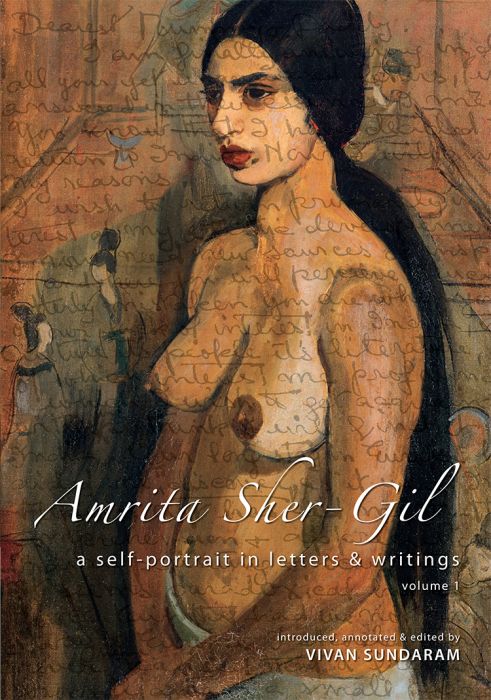Amrita Sher-Gil
This self-portrait of the iconic Indian painter Amrita Sher-Gil (1913–41) represents more than a life. For this book in two volumes, Amrita’s extant letters and writings are translated and reproduced from the originals, and in their entirety. The book draws on the primary text of these letters to open up a visual narrative around the artist’s oeuvre, complemented by a parallel text of notes that not only annotate but also entangle the personal in the web of contemporaneity. The editorial intervention expands the setting to include the artist’s voice, photographs from the Sher-Gil family album, a collation of reviews from contemporary art critics, and excerpts from autobiographies and testimonies that touched Amrita’s life. There are full-colour reproductions of 147 paintings by the artist, representing the largest such collection in print, as well as of her early sketches and watercolours.This archival effort makes for a definitive volume on the life, art and writings of Amrita Sher-Gil. The book has a Foreword by Salman Rushdie; a Prologue and an Epilogue by Vivan Sundaram; a complete list of Amrita Sher-Gil’s 172 known oil paintings with thumbnail sketches and detailed captions; and a select bibliography of writings by and on Amrita Sher-Gil.

‘Anything anticipated too long often ends in anti-climax. Not this outstanding and enthralling two- volume memorial to Amrita Sher-Gil, India’s most iconic painter – almost twenty years in the making…. All previous writing on Amrita and her art has tantalized, inspired, raised questions, enthralled, exasperated – while conveying only a pale shadow of her brilliant, many-faceted self. These two volumes encompass all dimensions and are deeply, deeply satisfying. There is sadness, delight and gratitude…. It is these minutiae and insights as well as the larger aesthetic and existential issues of her life and work, illustrated in alternate pages by the paintings and photographs, that make Vivan’s two volumes such a rite of passage. A revelation of someone one thought one knew, and that one re-discovered all over again. A portrait of a person that is also a portrait of an era. One owes Vivan and Tulika much gratitude. A labour of love has been executed with both passion and meticulous, imaginative precision. And, since Amrita’s prized love was prodigal of it herself, she would have rejoiced and celebrated it.’
Laila Tyabji, The Book Review
'In effect these volumes are Amrita’s autobiography. For its Amrita who’s speaking to us through innumerable letters to family, friends, relatives and art critics. You get a sense of a woman with a strong sense of her own destiny…. To read Amrita is to fall in her thrall, to be seduced and swept away by her…. Vivan Sundaram, her nephew, needs to be congratulated on his wise decision to step back and not interfere in the dialogue between Amrita and her rapt audience. Because these letters, even eighty years on, speak to us. When he does provide judicious, meticulously researched cross references that further illumines what we are reading. Vivan renders himself invisible and foregrounds Amrita. And in this lies the strength of these invaluable volumes. If ever there was a Michelin rating for literary work this one gets ten stars! Delicious!’
Sunil Mehra, Take on Art
